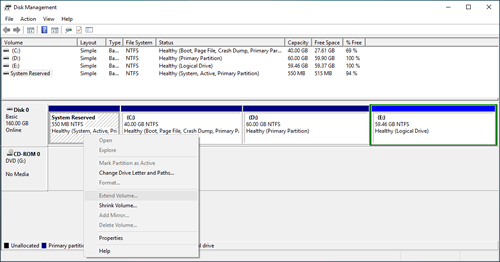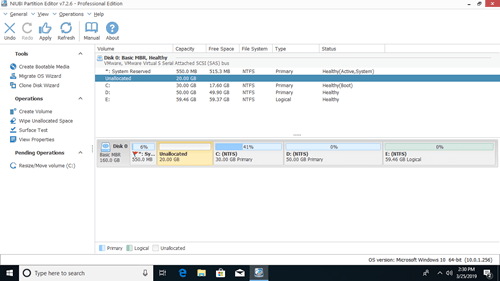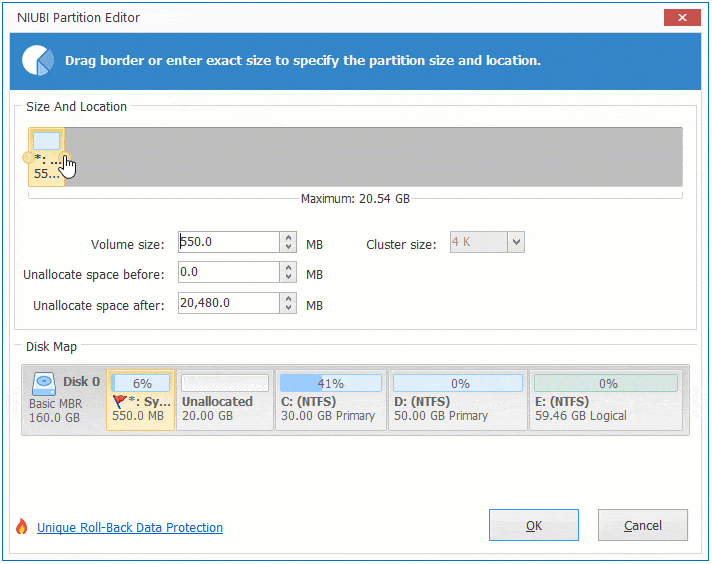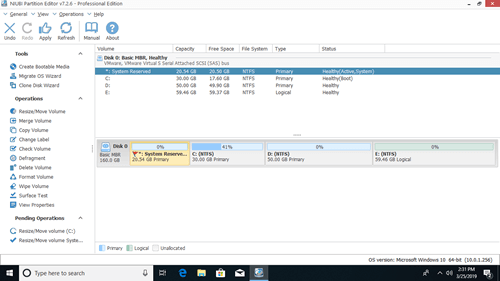There's no system reserved partition in Windows XP and Server 2003, system and boot partition are the same C: drive. From Windows 7, System Reserved partition is introduced. The System Reserved partition contains two types of files: boot manager, boot configuration data and startup files for Bitlocker encryption. In general, you don't need to care about the System Reserved partition. But when you upgrade Windows 7/8 to Windows 10, or update Windows 10/8/7, you may encounter the error "We couldn't update system reserved partition", error code 0xc1900104, or error code 0x800f0922. This is because:
- The System Reserve Partition (SRP) is a small partition on your hard drive, some third-party anti-virus and security apps write to the SRP, and can fill it up.
- The System Reserved partition consumes 100 MB of space on Windows 7, 350 MB of space on Windows 8, and 500 MB of space on Windows 10. When you upgrade Windows 7/8 to Windows 10, original System Reserved partition is too small.
To solve this problem, you need to increase system reserved partition. In this article, I'll introduce how to extend System Reserved partition in Windows 10/8/7 with best free tool.
Can't increase system reserved partition in Windows 10 with native tools
Although there's "Extend Volume" function in Windows 10/8/7 Disk Management tool, it cannot extend System Reserved partition by shrinking C or other volume. Because when extending a partition with Disk Management, there must be adjacent Unallocated space on the right. If you shrink the adjacent C drive, Unallocated space is nonadjacent to the System Reserved partition.
The only way to get contiguous Unallocated space for the System Reserved partition is by deleting C drive. But you can't delete it because it is where Windows Operating System located. As you see in the screenshot, Extend Volume is disabled for the system reserved partition after shrinking C drive.
Windows 10/8/7 has another diskpart command tool. The same with Disk Management, it requires deleting the right contiguous partition. To increase system reserved partition in Windows 10/8/7, you must run third party partition software.
How to extend system reserved partition in Windows 10/8/7
Unlike Windows Disk Management that can only shrink a volume towards left, NIUBI Partition Editor can shrink volume and make Unallocated space on either left or right. So System Reserved partition can be extended easily after shrinking C drive. If you've shrunk C or other partition using Disk Management, NIUBI Partition Editor can move Unallocated space to the left, and then combine to the System Reserved partition. To Windows 11/10/8/7/Vista/XP home computer users, NIUBI has free edition.
Download the free edition and you'll see the initial partition size and other information, there's a 550MB system reserved partition in my test computer.
Steps to extend system reserved partition in Windows 10/8/7 without losing data:
Step 1: Right click C: drive and select "Resize/Move Volume", drag left border towards right in the pop-up window (or enter an amount in "Unallocated space before").
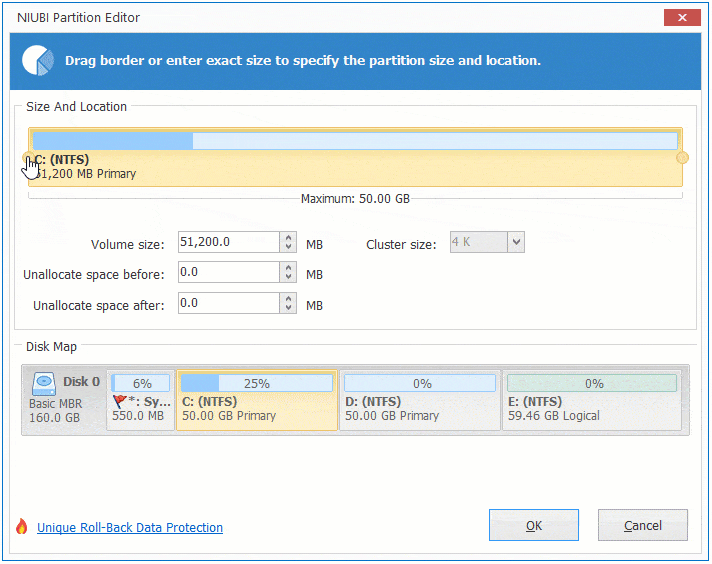
Step 2: Right click the system reserved partition and select "Resize/Move Volume" again, drag right border towards right to combine this Unallocated space.
If you want to get Unallocated space from a nonadjacent partition such as D in my computer, there's an additional step to move Unallocated space before adding to the System Reserved partition. It requires computer rebooting when shrinking and moving C: drive.
Follow the video guide to increase System Reserved partition in Windows 10/8/7:
Take care of system and data while resizing partition
When resizing any partitions, the parameters of each partition and all files in it will be modified, sometimes all files will be moved to new locations. Therefore, there is potential system damage and data loss risk. You'd better back up in advance and run safe partition software.
Better than other tools, NIUBI Partition Editor has unique 1 Second Rollback technology, it is able to reverts computer to original status in a flash automatically if it detects any error. It also has Virtual Mode, Cancel-at-will and advanced file-moving algorithm to help resize partitions more safely and much faster. Besides shrinking and extending partition, it helps you copy, merge, convert, hide, defrag, wipe partition, scan bad sector, optimize file system etc.

